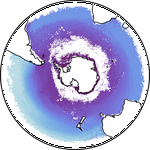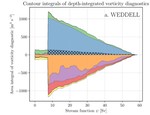Andrew Styles
Physical Oceanographer
British Antarctic Survey
Bio
I am a physical oceanographer at the British Antarctic Survey and I study basin-scale and global-scale circulations alongside their behaviours in climate models.
I lead the adjoint component of OceanBound, an ambitious project to study the role of ocean boundary pressures in the global ocean. As an adjoint modeller, I am using the ECCO state estimate to determine what external forces the boundary pressures are most sensitive to.
I completed my PhD at the University of Oxford in 2023. I studied the dynamics of the Weddell Gyre and its influence on Southern Ocean ventilation. I tackled this research by designing idealized models, developing diagnostic methods, analyzing Lagrangian trajectories, and exploring possibilities with pen and paper analysis. I continue to study the dynamics of the Weddell Gyre and enjoy a close collaboration with members of the SO-CHIC project (Southern Ocean-Carbon and Heat Impact on Climate).
Please reach out to me if you would like to meet or collaborate!
Icons made with
Inkscape





